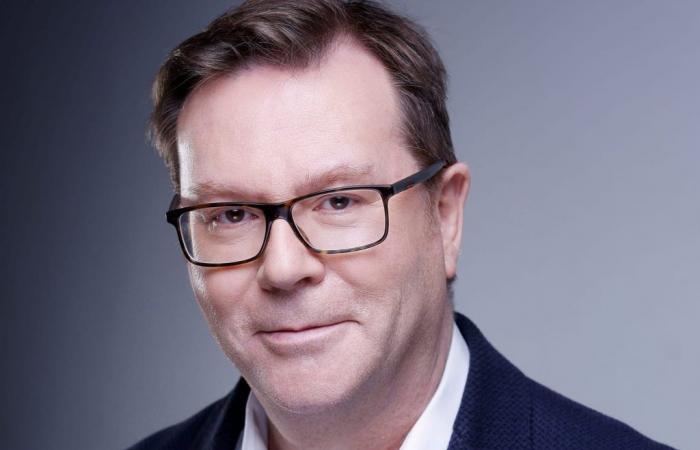
For Philippe Bigot, head of video at Havas Media Network, the offer from American streaming platforms is sufficiently qualitative to weigh in the negotiations of advertising rates for TV channels in 2025.
JDN. How does the decision of linear TV channels to increase the price base for TV spots from 30 to 20 seconds from 2025 mark a turning point? ?
Philippe Bigot. Changing the pricing reference base format is not a problem, that’s not what drives up prices (TF1, M6, and Canal+ announced at the beginning of October the adoption of 20 seconds as the basic format of advertising spots from 2025, followed by France TV and RMC BFM, editor’s note). It’s been a long time since advertisers decided to reduce their TV format, which is now mostly 21 seconds. What poses a problem, however, is applying the price of the 30-second spot to the 20-second spot. This is what the French broadcasters have decided to do from 2025: deliberately increase their prices by around 7.5% on 20 seconds, and by 10% on 30 seconds. The real novelty is there.
In addition, by changing the reference to 20 seconds, the channels have opened up an avenue to continue to increase the price of the 30-second format in the years to come, in order to bring it closer to digital prices. Of course, linear TV is cheaper in absolute terms than digital and 30 seconds is the cheapest format per second. But when it comes to supplementing the coverage that TV can no longer offer, the bill becomes extremely steep. Digital is therefore holding its own very well.
This decision sends strong signals to the market: suddenly, behind the scenes, people are starting to say that TF1 costs too much. Locks are being broken: since TF1’s announcement, many advertisers have been asking us about alternatives to linear TV that would be interesting to deploy to reach their audience. I think that the transfer of budgets from linear to digital will accelerate.
Is the channel strategy risky in your opinion?
By adopting this inflationary attitude, the chains are indeed taking a risk. The quality of advertising contact which has become the new hobby horse of the historic channels is not their privilege. American streaming platforms, including Amazon Prime Video, Disney, Max and Netflix, can fully demonstrate the quality of their contacts, completely comparable to that of historic television channels. The GRP measurement does not scare them, they all discuss it with Médiamétrie. The only remaining opponent is Google (YouTube), which does not offer the same quality of context and viewing, nor of the advertising experience.
We can therefore wonder if advertisers still have an interest in doing as much linear television as before… The answer is rather no and for two reasons. The first is that the share of television viewing is only decreasing across all target populations. Between 2019 and 2023, television lost 20% of its potential GRP to sell and it will drop again this year. Take 25-49 year olds, they spend half their time on platforms, and the other half on television. An advertiser today can no longer be content with only doing linear TV, that’s a fact. The second reason is the inflation that the chains intend to impose in 2025.
Is linear inflation a way for channels to stimulate investment on their own streaming platforms, such as TF1+ or M6+? ?
The channels are undoubtedly hoping that advertisers who do not find what they are looking for on the shelf will decide to shift their investments to their streaming platforms, which they have built to adapt to new uses and face competition from American platforms. But that would be to forget that when we are interested in digital, we are interested in all platforms. The advertiser who wants to switch his investments from linear TF1 to digital will not only do so on TF1+, but also on other services, and in particular on American platforms. Outside of YouTube, the latter’s audience pools certainly remain limited, but they continue to grow.
This announced increase will be tested in negotiations between the channels and the agencies that represent advertisers. What are your margins of maneuver in the face of chains that are united? ?
TF1 and France TV are those which seem most determined to impose higher inflation. The others will follow. But in practice, it is the law of supply and demand which will decide this. Lots of factors will weigh on these negotiations. But there is a central point: the health of the market. There is a lot of geostrategic, political and macroeconomic uncertainty in the air. Advertisers are already starting to slow down this fall. In 2025, will demand be so high in the face of a steadily shrinking GRP? I doubt it. We are already seeing agencies doing promotions at the end of the year…
For advertisers who have historically invested a lot in linear TV, we would advise them to shift more towards channel streaming platforms to contain inflation. For more modest budgets, we will perhaps focus on tactics to minimize the most expensive prime time, such as those of TF1. We can also move on to a tactical, one-off purchase, which plays between linear and platforms depending on the inflationary movements of TV. Some advertisers are already doing this. There can be many scenarios, depending on each advertiser, their volume of investments, their ability to do digital, etc.
The announcers have not decided anything yet. A first decisive moment will take place in November, when the campaigns for the start of 2025 will be negotiated.
How to explain this inflationary strategy on the part of the chains ?
Since post-Covid, television prices have risen every year via yield management strategies. Channels focus on the most profitable advertisers. They can afford it: they turn away customers because they can’t serve them all. For what ? Because fewer and fewer French people watch television. The channels are forced to raise their prices to try to keep the same revenue levels despite the drop in available GRP, especially since demand still exists and they have the imperative to finance both the production of their linear programs and the content of their digital platforms. France TV, despite the excellent effect of the Olympic Games, will not achieve its financial objectives for this year. TF1+ will only be able to maintain the success of being seen by 35 million French people by offering new programs, different from linear television, and unifying.
If the cost of contact does not increase in the same way for all advertisers, on average, this strategy increases prices and we see it individually. The WFA indicator (World Federation of Advertisers, editor’s note) attests to this: +8% in France in 2024 for example for a generic target, which is far from neutral. We are the anti-inflation shields of advertisers and our role is to limit damage. If advertisers begin to disengage from linear, TV agencies may be forced to reassess their position.





